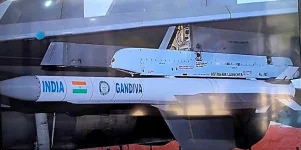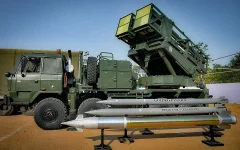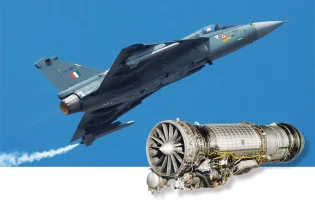- Views: 3K
- Replies: 28
Lockheed Martin is positioning its C-130J Super Hercules as the leading candidate for India's upcoming procurement of up to 80 Medium Transport Aircraft (MTA).
As the Indian Air Force (IAF) prepares for the landmark tender, the American aerospace company is highlighting the aircraft's proven reliability and the IAF's existing experience with the platform.
Roderick M. McLean, Vice President for Air Mobility and Maritime Missions at Lockheed Martin, recently emphasized that this familiarity would allow for a smooth and rapid integration of new aircraft.
"The IAF already operates the C-130Js and is pleased with its performance, versatility and reliability," Mr. McLean stated. "Infrastructure is in place for maintenance and training."
This bid is strongly supported by Lockheed's industrial commitment to India, centered on an expanded partnership with Tata Advanced Systems Limited (TASL). This collaboration is key to the company's promise of meeting local content requirements.
The $8 Billion Procurement
This major defence procurement, valued at an estimated $6 to $8 billion, is being revived to replace the IAF's aging Soviet-era Antonov An-32 fleet.The program is critical for filling gaps in India's tactical airlift capacity, which is essential for transporting troops and material to border regions and supporting humanitarian aid missions.
The tender, which has grown from an initial estimate of 56 to as many as 80 units, will require the winning bidder to make significant commitments to technology transfer and local manufacturing under the government's 'Make in India' and 'Atmanirbhar Bharat' (self-reliant India) policies.
A Proven Platform
The Indian Air Force's experience with the C-130J began in 2011 with the induction of 12 Super Hercules aircraft. This existing fleet has reportedly accumulated over 50,000 flight hours.The aircraft have proven their capability in a wide range of demanding environments, from conducting high-altitude landings in Ladakh to performing disaster relief operations.
A key advantage of the C-130J is its short takeoff and landing (STOL) capability, which IAF officials have praised for its suitability in accessing remote airstrips in mountainous regions.
Bolstering this bid is an existing "Make in India" success story: a joint venture named Tata Lockheed Martin Aerostructures Limited (TLMAL) already manufactures the complete tail assembly (empennage) for every new C-130J sold globally.
This partnership is set to expand, with plans for a dedicated Maintenance, Repair, and Overhaul (MRO) facility in Bengaluru. This ecosystem supports the promise of achieving at least 30% local content for the new aircraft.
The Competition
While Lockheed Martin highlights its proven platform, it faces strong competition. The tender is expected to be a three-way contest:- Embraer (Brazil): Offering the C-390 Millennium, which boasts a higher maximum payload of 26 tons. Embraer has reportedly partnered with the Indian firm Mahindra to support its bid.
- Airbus (Europe): Proposing the A400M, a much larger aircraft with a 37-ton payload capacity. Airbus already has a major industrial footprint in India through its C-295 transport aircraft partnership with Tata.
Competitor Overview
| Feature | Lockheed C-130J | Embraer C-390 | Airbus A400M |
|---|---|---|---|
| Max Payload | ~20 tons | ~26 tons | ~37 tons |
| Range (Est.) | ~2,400 km (with payload) | ~2,800 km (with payload) | ~3,300 km (with payload) |
| IAF Familiarity | High (12 in service) | None | Low (trials only) |
| Est. Unit Cost | $80-90 Million | $85-95 Million | $150-180 Million |
| Local Partner | Tata (TASL) | Mahindra (Reported) | TBD (Existing TASL partnership) |




